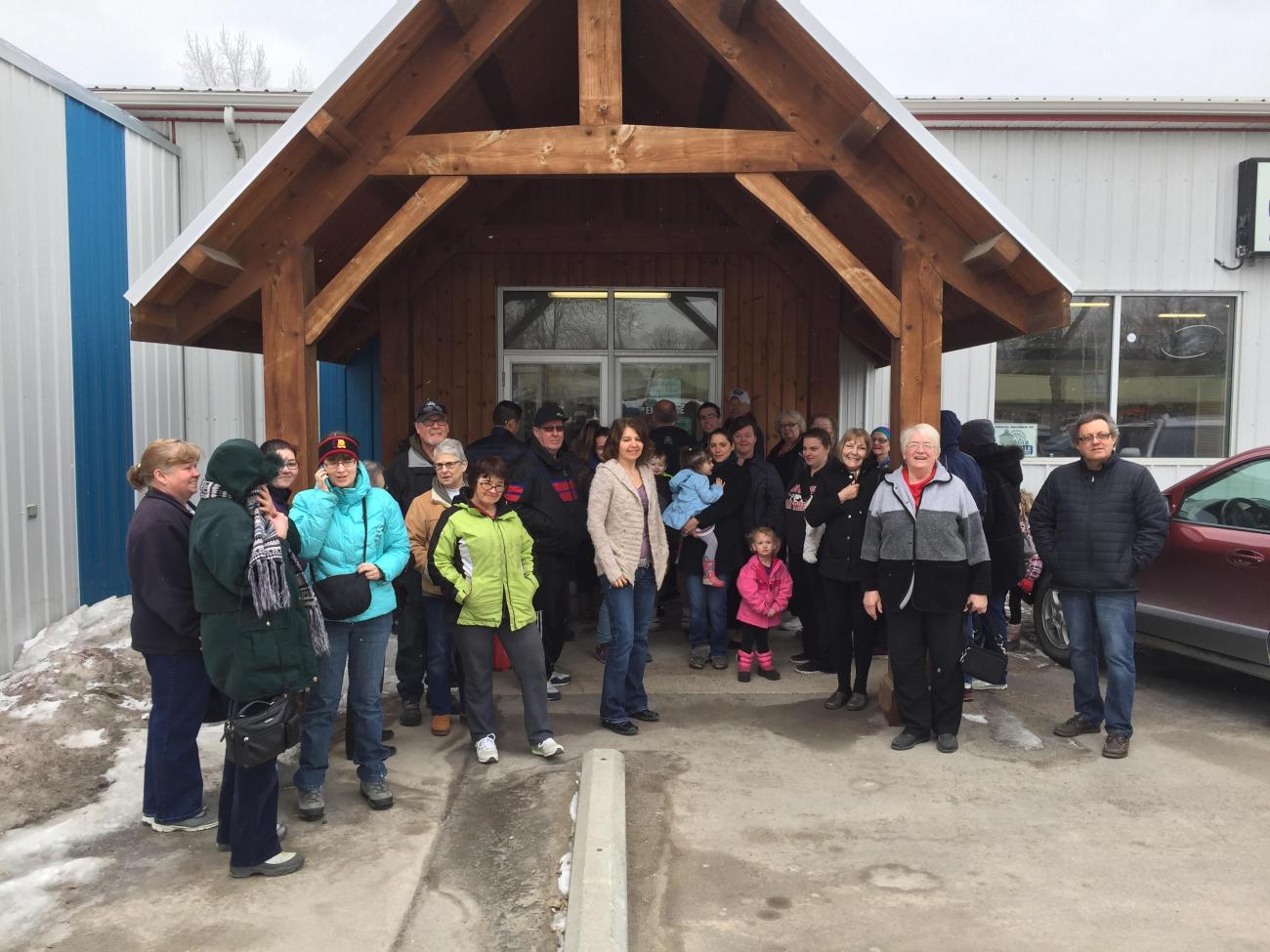On Saturday, April 28, the Niverville MCC Thrift Shop held a special event to mark an important moment in their 44-year history. The celebrations will include special discounts, prizes, and free food.
Ten years ago, business at the Niverville MCC Thrift Shop was booming so much that they needed a larger space, so the board purchased the much more spacious building next door. A former chicken hatchery, the building at 246 Main Street had to be remodelled before the thrift shop moved in.
As a way to celebrate the anniversary of this move, the shop will be offering a 25 percent discount to all shoppers, giving away special prizes, and offering hot dogs, cookies, juice, and coffee free of charge. The event will run during their regular Saturday hours of 10 a.m.–1:00 p.m.
The goal of the event is both to celebrate and raise funds for local organizations. Visitors are encouraged to bring cans of non-perishable food items or money to donate to the local Helping Hands food bank. Shoppers will also have the option of donating their 25 percent shopping discount to Helping Hands and Youth for Christ.
“There is no right or wrong answer here,” says store manager Gerald Loeppky. “People are absolutely welcome to accept the discount. But I think there are many people who are able to say, ‘I’m blessed enough that I can pass this along to someone who needs it more.’”
Donating to community organizations is a strong part of the thrift shop’s history. The Niverville MCC Thrift Shop is affiliated with the Mennonite Central Committee, a worldwide ministry of Anabaptist churches that works to provide aid.
“We work for peace and justice, education, disaster relief, things like that,” says Loeppky of the MCC. “We’re doing a lot of education in terms of healthcare and in terms of getting kids into schools in places where they weren’t previously able to get to school.”
In provinces like Alberta and Ontario, the MCC owns thrift shops outright. It’s a little different in Manitoba, where churches and other community organizations put up the money to start a thrift shop, but they work with MCC.
The Niverville shop is owned by a governing body called the Niverville MCC Community Assistance Centre Inc. It’s a non-profit organization with an administrative board that is elected by the general membership.
“We have an agreement with MCC that we will give 50 percent of our proceeds to them,” Loeppky says. “And then we also give to local charities. For example, the Niverville grow projects that raise money for the Canadian Foodgrains Bank, Helping Hands, Niverville Youth for Christ, as well as the Niverville Health Foundation.”
The thrift shop has seen a lot of growth over the years, says Loeppky, and that growth is attributed to all the local support it receives, from the volunteers who work in the shop to the people who donate items.
In the four decades that the Niverville shop has been open, more than just the location and donation size has changed. The role the shop plays has changed, too, as has its mission.
“Initially [MCC] needed money to help people who were in poverty,” Loeppky explains. “We sent them clothing and food, but then we realized years later that it would be better to just send the money, because then they could buy their products locally.”
Loeppky recalls that someone once made a comment that it would be helpful if they had a machine that could turn all their surplus possessions into cash.
“Some women in Altona then had this idea to run a thrift shop,” Loeppky says. “They thought they would run out of stuff after a few months, but that was 1972 and we haven’t run out of stuff yet!”
Today, Loeppky says they’re facing a new challenge in terms of how international aid is offered, but also in terms of the environment. “The amount of new clothing we buy has grown 400 percent per person since the 1980s. We’ve started buying clothes because we can, not because we need to. In some cases, new clothing items only get worn three to five times before being disposed of.”
The problem is that nobody wants these clothes once they’ve been worn a few times. So-called “fast fashion” creates millions of tons of waste per year. In North America, a lot of discarded clothing gets bought for about 10 or 12 cents per pound and sold to poorer countries, where only about ten percent is sold for profit, and the rest is put into landfills or burnt.
“It’s creating an environmental problem,” says Loeppky. “But it’s also destroying the textile industries in other countries.”
In addition to donating money to causes both local and international, thrift shops keep surplus items like clothing and dishes that can’t normally be recycled out of landfills.
“We want to help people, but we also want to make the world a better, safer, cleaner place,” Loeppky says.
Although the specifics have changed, the thrift shop continues its mission to provide aid both around the world and closer to home.


